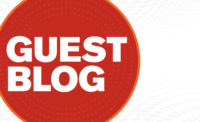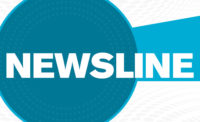The consumer market for smart thermostats is growing, and opportunity for smart thermostat makers — especially in the U.S. and Western Europe — is also on the rise; however, regional thermostat sales channels vary greatly. In the U.S., smart thermostat makers market directly to end users, but, in Europe, it’s the utilities that are marketing these products.
STRATEGIC PARTNERSHIPS
When the Nest Learning Thermostat debuted in 2011 in the U.S., the company decided to leapfrog the professional channel of installers and target end users directly. Doing so had many advantages for Nest Labs Inc., as the company didn’t have to compete with more established manufacturers, and going direct allowed them to target the more technologically inclined people they wanted to use their products.
In the U.K. and the Benelux Union, however, utilities view smart thermostats as a competitive advantage to spur potential customers in the region to switch electricity providers. Accordingly, a number of partnerships have been formed, including:
• Eneco in the Netherlands, which has an agreement with Quby;
• Npower in the U.K., which has a partnership with Nest; and
• SSE in the U.K., which has a partnership with tado°.
British Gas, the largest energy provider in the U.K., has even gone one step further by offering its own smart thermostat called The Hive. The latest IHS Thermostats Report reveals that more than 220,000 connected and smart thermostats moved through the utility channel in the U.K. in 2014. This number is expected to increase to 1.1 million in 2019.
DEMAND AND RESPONSE
While offering free home thermostats provides an incentive for customers to switch to a new energy provider, utilities also mandate customers agree to become part of a demand-response program. In a demand-response program, a utility can temporarily shut off air conditioners and heaters during times of high demand in order to lessen stress on the electrical grid.
The number of demand-response programs is also growing in other Western European countries as the region aims to cut pollution, use renewable power options to decrease dependency on foreign sources of energy, and fulfill the European Union’s 2020 goal of 20 percent energy savings.
While there have been some U.S. partnerships between utilities and smart thermostat manufacturers, the penetration of the utility channel has not advanced as quickly as it has in Europe due to the vast number of utilities in the country. For example, while the U.K. has seven significant utility providers, there are more than 3,000 publicly owned utilities in the U.S. It is, therefore, much more difficult for thermostat manufacturers to determine which partnerships are worth the investment.
The utility channel will only continue to grow in importance for smart thermostat manufacturers as new entrants in the market look to the utilities channel to help market their brands. And, because decreasing the load on the electrical grid is easier and cheaper than generating more power, utilities will increasingly look to smart thermostats and other new ways to cut demand.
To purchase a copy of the latest IHS Thermostats Report, visit http://technology.ihs.com.
Publication date: 10/19/2015
Want more HVAC industry news and information? Join The NEWS on Facebook, Twitter, and LinkedIn today!






